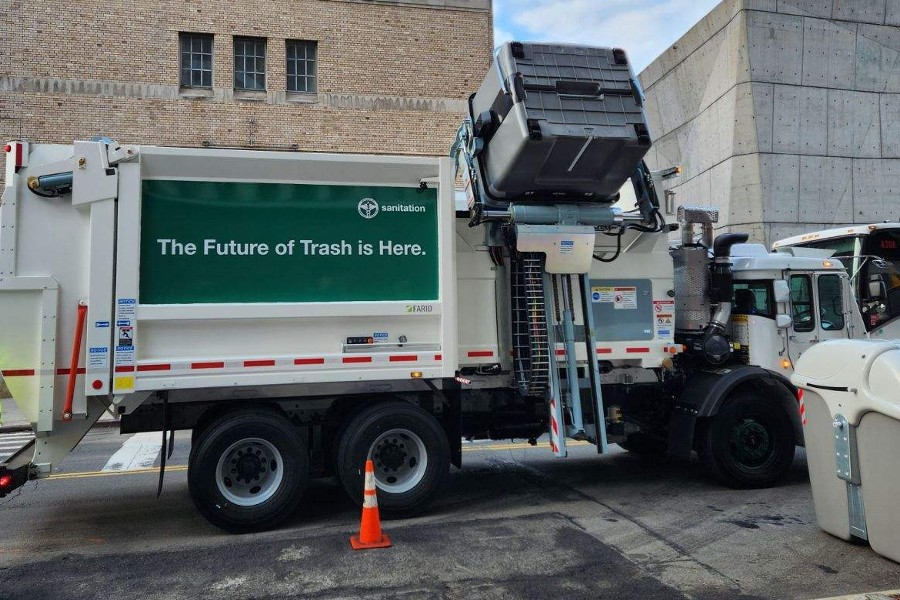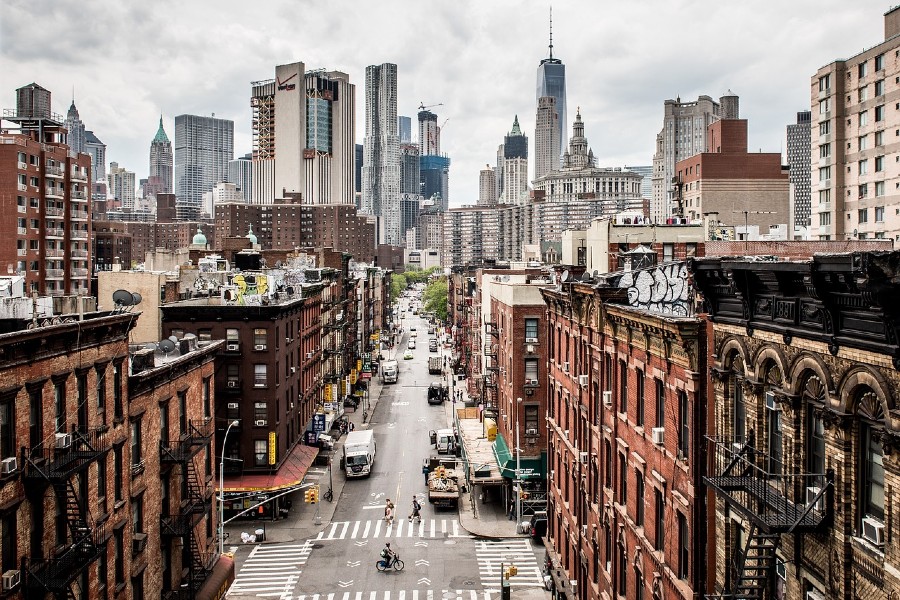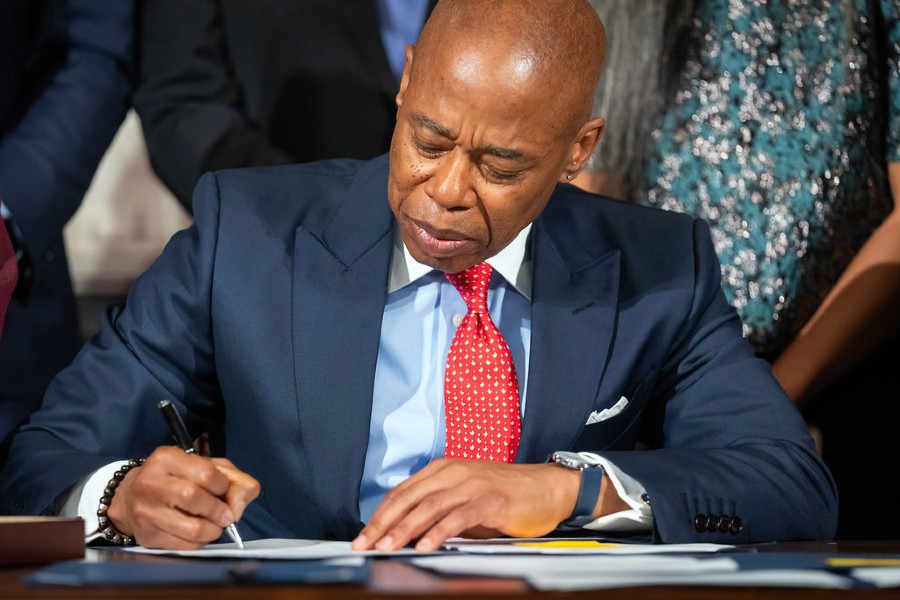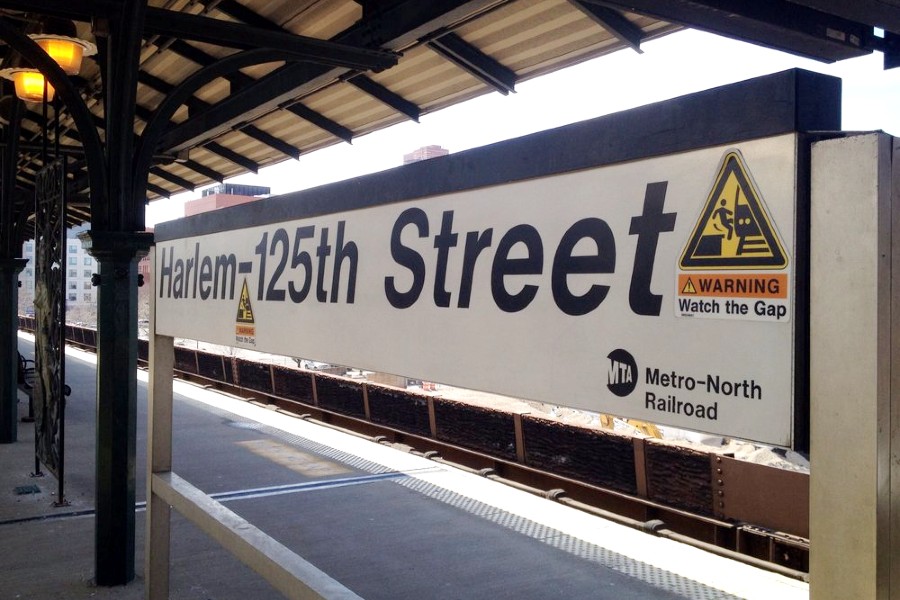
New York City Mayor Eric Adams and New York City Department of Sanitation (DSNY) Commissioner Jessica Tisch today made two major announcements.
The announcements will help get all of New York City’s trash off the streets and into secure, rodent-resistant containers, once and for all. The two announcements — a new, automated, side-loading garbage truck and a new data-driven containerization strategy — taken together represent the largest single turning point in the ongoing effort to make New York City the cleanest major city in the United States, and affirm a commitment in Mayor Adams’ 2024 State of the City address to set New York City on the course to store all trash put out for pickup in containers. Mayor Adams also announced that, thanks to today’s new announcements, Manhattan Community Board 9 in Harlem will be the first district with 100 percent of its trash containerized and serviced next year. These announcements follow new data in the Preliminary Mayor’s Management Report showing that the city’s streets are getting cleaner.
“The data is clear: Under our administration, New York City’s streets are cleaner. And as of this fall, thanks to the bold steps we have taken, a full 70 percent of New York City’s black bags will be off our streets and put into containers — but we’re not stopping there,” said Mayor Adams. “The new garbage truck we’re unveiling today — four years ahead of schedule — represents the future of New York City garbage collection. It means we’ll be able to containerize trash from our large residential buildings, something people didn’t believe would be possible in our dense city. And thanks to that truck and our commitment to turning our streets from mean to clean, residents of Manhattan’s Community Board 9 will be the first in the city to experience our streets free of every single black bag.”
“Rats and black bags are heading off our streets — no room for them in a containerized New York City,” said Deputy Mayor for Operations Meera Joshi. “Thanks to the hard work of DSNY, we have a smart containerization plan that meets the diverse needs of the city. New Yorkers and visitors are getting the clean, welcoming streets they deserve.”
“New Yorkers have been clear: they’ve had enough of the black bags occupying our sidewalks, enough of the oozing garbage juice, and enough of being told that other global cities can have something that we can’t,” said DSNY Commissioner Tisch. “This administration rejects the cynicism that says things can’t change, and the speed at which we’ve moved to change the relationship between 8.3 million New Yorkers and 44 million daily pounds of trash cannot be overstated.”
Automated Side-Loading Truck: A New Superweapon Against Trash
The Adams administration today unveiled an all-new, automated, side-loading garbage truck — removing a major barrier to containerizing trash from high-density residential buildings. DSNY’s 2023 “Future of Trash” report found that this type of truck is needed to service the stationary on-street containers that high-density buildings will use to containerize their trash. But less than one year ago, industry experts estimated that development of this prototype truck would take up to five years. The truck unveiled today will also allow for substantially faster collection than manual pick-up. The rapid development of this prototype — which took place in Torino, Italy and in both Hicksville and Brooklyn, New York — will be followed by substantial testing and training.
A New Data-Driven Model
Mayor Adams today outlined a new strategy for determining the type and size of containers that will be used for buildings of different sizes. Under this model, buildings with 31 or more residential units will be required to use stationary, on-street containers for their trash, serviced by the new automated side-loading garbage truck described above. Those on-street containers will be assigned to a specific building, solely for residents of that building. Buildings with 10 to 30 units will be able to choose between stationery on-street containers and smaller wheelie bins. Buildings with one to nine residential units will be required to put their trash in individual wheelie bins starting this fall, with the first-ever official NYC Bins available for use at that time and required by all residential units with one to nine units approximately two years later, in the summer of 2026. This model was informed by a volumetric analysis of how much trash buildings of different sizes produce, on average.
A New Timeline to Containerize a Full Community District
Thanks to the automated, side-loading garbage truck and new containerization strategy announced today, New York City will have its first district with 100 percent of its trash containerized and serviced next year: Manhattan Community Board 9. The district is currently home to a successful containerization pilot on 10 residential blocks and at 14 schools, during which rat sighting complaints in the pilot zone dropped by 68 percent compared to the same period the prior year.
Because the automated side-loading truck had not been available, that current 10-block pilot uses wheeled containers, which sanitation workers wheel to the back of a conventional collection truck retrofitted with a tipping mechanism. Those wheeled bins will be removed and replaced with stationary on-street containers like those used in Europe, Asia, and South America.
As this full-district pilot will require procuring new containers and new trucks, installation will begin across the entirety of Manhattan Community Board 9 in Harlem in the spring of 2025. This work is already underway, and DSNY will release an RFP to procure the containers next month. DSNY will conduct the necessary environmental review this year and will engage in substantial outreach across the district.
A timeline and process for expansion beyond Manhattan Community Board 9 will be determined based upon learnings from the pilot district.
The “Trash Revolution” Thus Far
The implementation of the transition to automated side-loading trucks for high-density buildings and a new containerization strategy will be among the final steps in the “Trash Revolution” and the war on rats.
- In October 2022, the Adams administration kicked off the Trash Revolution by changing set-out times for both residential and commercial waste from 4:00 PM — one of the earliest set-out times in the country — to 8:00 PM in April 2023, while also allowing earlier set-out if the material is in a container. This incentivization of containerization was paired with major changes to DSNY operations, picking up well over a quarter of all trash at 12:00 AM rather than 6:00 AM, particularly in high-density parts of the city, and ending a practice by which up to one-fifth of trash had been purposefully left out for a full day.
- Later that month, DSNY published its “Future of Trash” report, the first meaningful attempt to study containerization models in New York City, and the playbook to get it done.
- Last August, containerization requirements went into effect for all food-related businesses in New York City. These businesses — restaurants, delis, bodegas, bars, grocery stores, caterers, etc. — produce an outsized amount of the type of trash that attracts rats.
- That same month, installation of the initial 10-block, 14-school Manhattan Community Board 9 pilot containers began.
- Last September, commercial containerization requirements extended to chain businesses of any type with five or more locations in New York City. These chain businesses tend to produce a large total volume of trash.
- Starting March 1, 2024, container requirements will go into effect for all businesses — of every type — in New York City to get their trash off the streets and into a secure bin.
- Later this fall, when container requirements go into effect for low-density residential buildings — those with one to nine units — approximately 70 percent of all trash in the city will be containerized.
- In the spring of 2025, installation of stationary on-street containers will begin in Manhattan Community Board 9 for the first full-district containerization pilot, serviced by new automated side-loading trucks.
“DSNY’s steadfast commitment to containerize waste is inspired,” said Director of Citywide Rodent Mitigation Kathleen Corradi. “This progress in systematically denying rats’ food access enables our city’s mitigation efforts to gain substantial traction and achieve sustainable, long-term success. The full containerization of CB9, representing one-third of the Harlem Rat Mitigation Zone, will have a significant positive impact on residents and a significant negative impact on rats.”
“They said that New York could not be contained — they were wrong,” said Chief Public Realm Officer Ya-Ting Liu. “We’re supercharging our city’s relentless drive to make New York the best pedestrian experience in the world.”
“Today marks a historic win in the war on trash,” said New York State Assemblymember Jenifer Rajkumar. “Four years ahead of schedule, we are taking major strides toward citywide waste containerization, launching automated side-loading collection trucks and using data models to rightsize containers. Once we containerize waste, we rid our streets of the unsightly mountains of garbage bags where rats feast away, instead securing those bags in rodent-proof containers. Congratulations to the people of Community Board 9: as the journey of a thousand miles begins with a single step, so too does the final victory in the War on Trash begin with a single community district. Through the dedication of Mayor Adams and Sanitation Commissioner Tisch, we will enjoy a city where streets are immaculate, trash is out of sight, and rats are begging for food.”
“All New Yorkers have a rat story. From what feels like time immemorial, these rodents have burrowed in our apartment walls, ruined evening walks, and found harbor in our sewer system. But where they thrive is where there is an abundance of trash—and in New York, where we toss plastic trash bags on street corners, this is practically everywhere. The only way to win the war on rats is to modernize the way we dispose, contain, and process our waste, and that is exactly what we are doing today,” said New York City Councilmember Shaun Abreu, chair, of the Committee on Sanitation and Solid Waste Management. “In West Harlem, where residents have experienced the worst rat infestations in the entire city for decades, trash management has never been equal. I know it because I see and hear it from my constituents every day. By expanding our containerization pilot program, we are finally putting West Harlem at the decision table when it comes to their right to live in rodent-free neighborhoods. We are not only closing the lid on our garbage, we are closing the door on a period of neglect. The movement for clean streets is here—and I couldn’t be prouder that West Harlem and Morningside Heights are leading from out front.”
“The mayor’s administration has made tremendous strides to improve sanitation efforts across the city, and I commend his efforts,” said New York City Council Majority Whip Selvena N. Brooks-Powers. “Today’s announcement is another important step towards reducing trash pile up on our streets, and it will help shrink the number of rats running across our sidewalks. I appreciate the mayor’s diligence in this cause. I look forward to seeing this new plan enacted.”
“I applaud Mayor Adams on the full-throttle war on rats and garbage. The trash in our communities creates many other problems – rats, which eventually find their way into our homes; blocked storm drains, which can lead to flooding; and other quality of life challenges,” said New York City Councilmember Oswald Feliz. “Clean streets are essential to safe and healthy communities, and we must make it a reality in every corner of New York City.”
Photo credit: DSNY’s new, automated, side-loading garbage truck. By New York City Department of Sanitation.
- How To Choose The Right Corporate Travel Management Provider For Your Business?
- How Having A Dog Can Enhance Your Overall Mental Health
- 10 Tips To Maximize Your Air Conditioner’s Efficiency
- New Gear For Fall On The Rise For You And Your Harlem Home
- NYIC Launches ‘New York Proud’ Public Art Campaign Celebrating Immigrant Stories Across NYC
Become a Harlem Insider!
By submitting this form, you are consenting to receive marketing emails from: Harlem World Magazine, 2521 1/2 west 42nd street, Los Angeles, CA, 90008, https://www.harlemworldmagazine.com. You can revoke your consent to receive emails at any time by using the SafeUnsubscribe® link, found at the bottom of every email. Emails are serviced by Constant Contact









